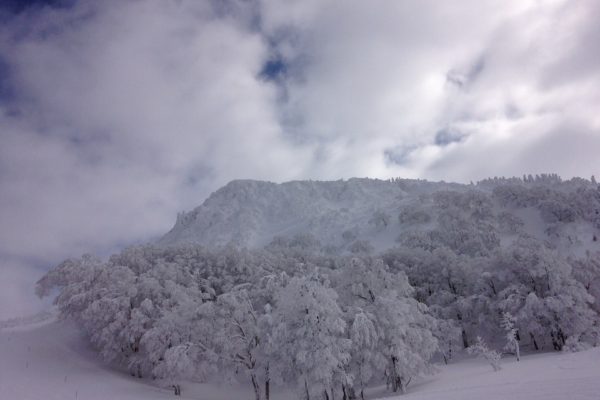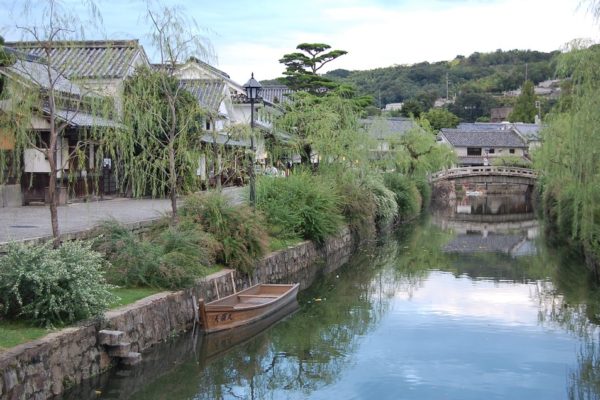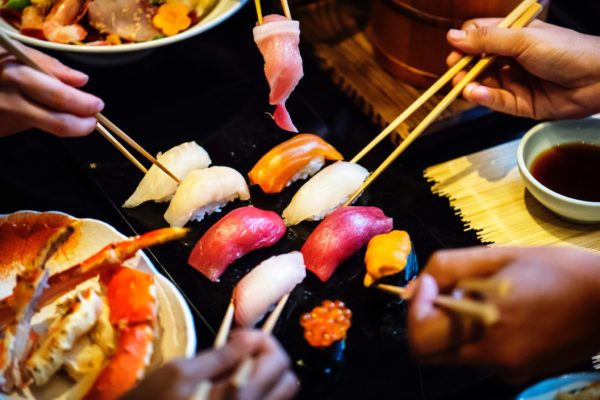Japan is famous for its many festivals. Some of these are seasonal and take place throughout the year. The most famous one is probably hanami – the flower watching. You get to sit on a blue sheet with your friends, eat great food, drink, play games and talk, and all of these while watching the pretty sakuras. Then there is hanabi – the fireworks. You do practically the same thing as with hanami, except this time as soon as it gets dark you get to enjoy beautiful fireworks for about an hour or even longer, depending in which city you are. Honestly, after living in Japan for two years I have come to the conclusion that Japanese people will come up with just about anything to get an opportunity of drinking all night! But that, and then a night spent screaming in karaoke makes life so much more interesting.
Anyway, in this article I want to talk about different types of festivals. Those that actually take place in a jinja, the Shinto shrines. Here is a list of my favourite Japanese traditional festivals which are being celebrated all over the country.
Hatsumode – This is the first visit to the shrine at the beginning of every year. You don’t really have a set date, but people tend to make their hatsumode during the first week of January. A lot of people tend to go to the nearby shrine after midnight strikes on the night of the 31st of December. You will see a lot of yatai on your way to the shrine, and even inside the shrine (yatai are small booths where you can buy traditional Japanese food and drinks). You might want to try amazake, which is a sweet drink made of rice. Chances are you won’t like it, but it will heat you up during the cold winter night, plus it is traditionally being drunk during your first visit to the shrine.
During your visit make sure to pray to the god of the shrine and ask them for whatever it is you wish for happening during the year. The next thing you will need to do is draw an omikuji – a fortune-telling paper strip. You can get anything from a terrible curse to big luck. Nonetheless, it is an interesting experience, so make sure to give it a try if you’re in Japan during the New Year season.
Dontosai: Hadaka Matsuri – This particular festival is usually celebrated in Tohoku Region, but it is worth seeing. The largest ones are held in Sendai and Morioka. As the name suggests this festival includes bonfires and half-naked men. The bonfire has a special meaning. You get to burn the omamori (lit. good luck charm) that have already fulfilled their purpose in it. But the most interesting part is seeing the rite. Many boys, young men and even elderly gentlemen take part in the festival. However, they have to wash their bodies with ice-cold water before they can participate. Afterwards they put on special white boxers, straw belts and straw sandals. Recently women have also started taking part in the hadaka-mairi and they get to wear a white jacket. The final touch is a thin paper between the lips to prevent talking or teeth chattering.
Hadaka-mairi is a purification rite which has over 300 years of history. You can find similar hadaka matsuri in many other corners of Japan, however the one you will get to see in Sendai is unique and one of its kind.
Setsubun – This is an event held in celebration of spring. It is quite an interesting one too. Not only you get to eat special dishes, but the male head of the household performs the so called mamemaki. The father of the family will throw some beans outside the house or at a family member who is wearing the costume of an oni (demon). Then the words Oni wa soto, fuku wa uchi! are being chanted. They literally mean “Demons out, luck in”. The event is especially beloved by children. This is another purification rite, which is supposed to drive away bad luck such as misfortune and bad health.
Seijin no Hi – This is something I wish other countries also celebrated. In Japan one comes to age when they turn 20. Many Westerners hold huge parties on their 20th birthday, and so did I. Unlike us though, Japanese people don’t really celebrate their birthdays with such a big flare. On Seijin no Hi all of those kids who are turning 20 during that year gather in their cities, have a ceremony, and afterwards hold massive celebrations. It is a fun day, and young men and women get to dress in traditional Japanese clothing called hakama.
Shichi Go San – This is another coming of age ceremony. It is held for boys who turn three and five years old and for girls who turn three and seven years old. The kids are also dressed into special type of kimono and hakama. They are taken to the shrines and afterwards photos are taken. The kids are also being given a red candy. Sometimes you might even see some children who are wearing Western attire. It is said that Shichi Go San finds its roots in Heian Period. Either way it is a sweet sight for one’s eyes.
Hina Matsuri – The event might be known to you as Doll’s Day or Girls’ Day. During this festival you will see many ornamental dolls in Japanese households which have daughters. The dolls are supposed to represent the Emperor and the Empress, but some might even represent attendants and court musicians. All of these dolls are wearing traditional Japanese court dresses. Since these dolls are quite expensive, they are usually passed down in the family. The whole point of the festival is to symbolically show the families good wishes and intentions for their daughters, such as health, luck and successful marriage.
Tanabata Matsuri – This is a festival of the stars. It is a nationwide festival. It symbolises the reunion of two lover stars who are only allowed to meet each other once in the year on this day. It is celebrated on the 7th of July in the whole country, except for Sendai.
Sendai Tanabata is actually quite famous. It is the most famous and the most lavishly celebrated tanabata event in the whole country. Believe me, Sendai Tanabata is definitely worth your visit. It is held every year from August 6-8. The city gets decorated in thousands of colourful streamers. In addition to the beautiful sights in downtown Sendai, usually a hanabi taikai, fireworks event, is held in the city as well.
This was a list of some of the most famous and worthwhile traditional festivals of Japan. Some of them might be harder to get an access to, but the trouble is worth it and I promise you will not regret it!



